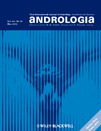Drug-inducing gynaecomastia – a critical review
Summary
Gynaecomastia has been associated with a large variety of drugs in the literature. However, a causal relation of the incidence of gynaecomastia to a certain drug should be considered only if sufficient and significant evidence can be obtained from the studies published. In this review, studies quoted in Medline were evaluated according to the Scottish Intercollegiate Guidelines Network (SIGN) grading system for clinical studies. Reports on 92 drugs were found in Medline in combination with gynaecomastia. An imbalance of the oestrogen/androgen ratio causes gynaecomastia. Also, prolactin has gynaecomastia-inducing properties. In 14 of the drugs quoted, the studies lead to a level of recommendation ‘A’. All these drugs have been designed to interfere with the production and action of sexual hormones or of prolactin. In 25 of the drugs, the level of recommendation was ‘B’. Besides those drugs in this group that have been designed for interference with the metabolism of steroid hormones or of prolactin, in drugs for acid-related disorders, diuretics, antiretroviral drugs, antimycotics, psychoanaleptics, alcohol gynaecomastia was described as an unexpected adverse effect. Studies on the association of drugs and gynaecomastia do not share a generally accepted definition of gynaecomastia; in this way, the informational value is limited.




